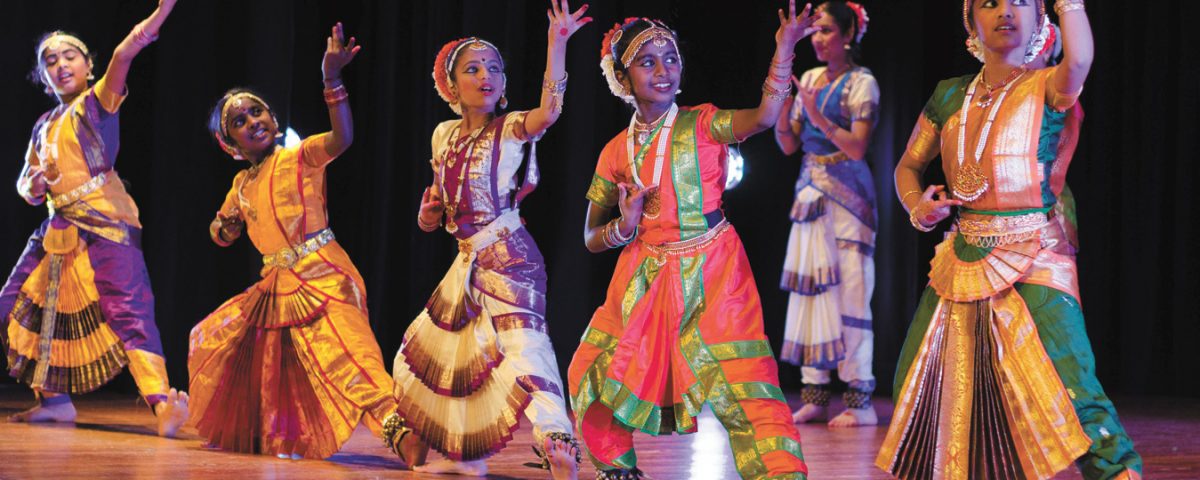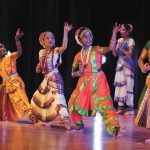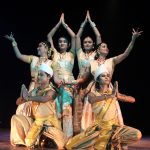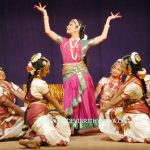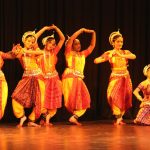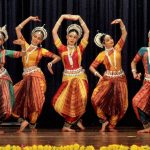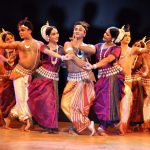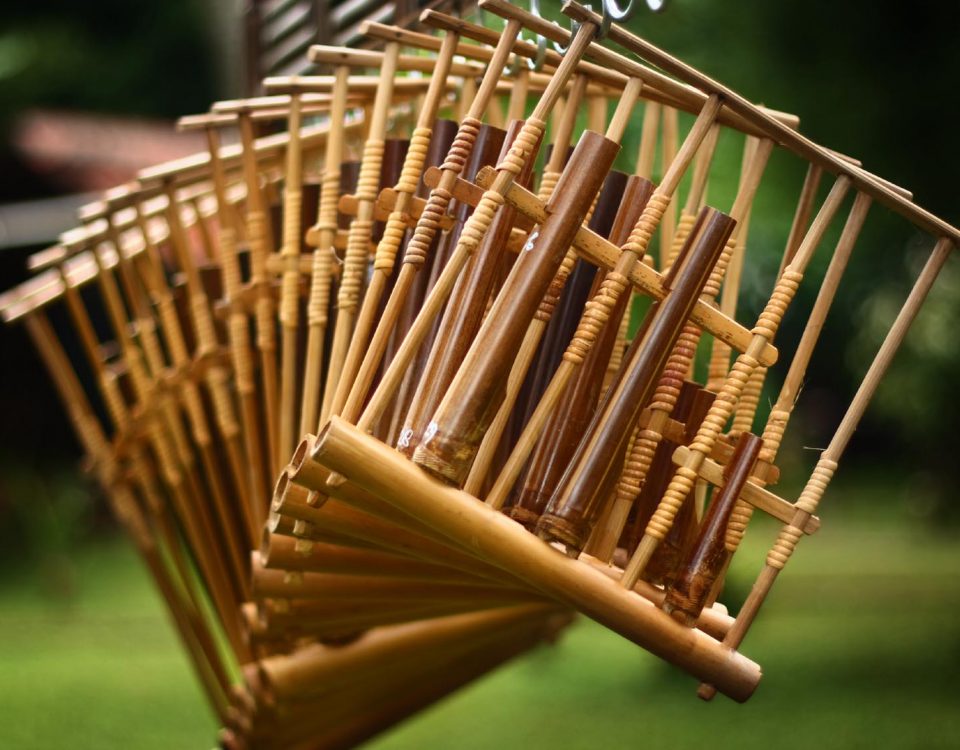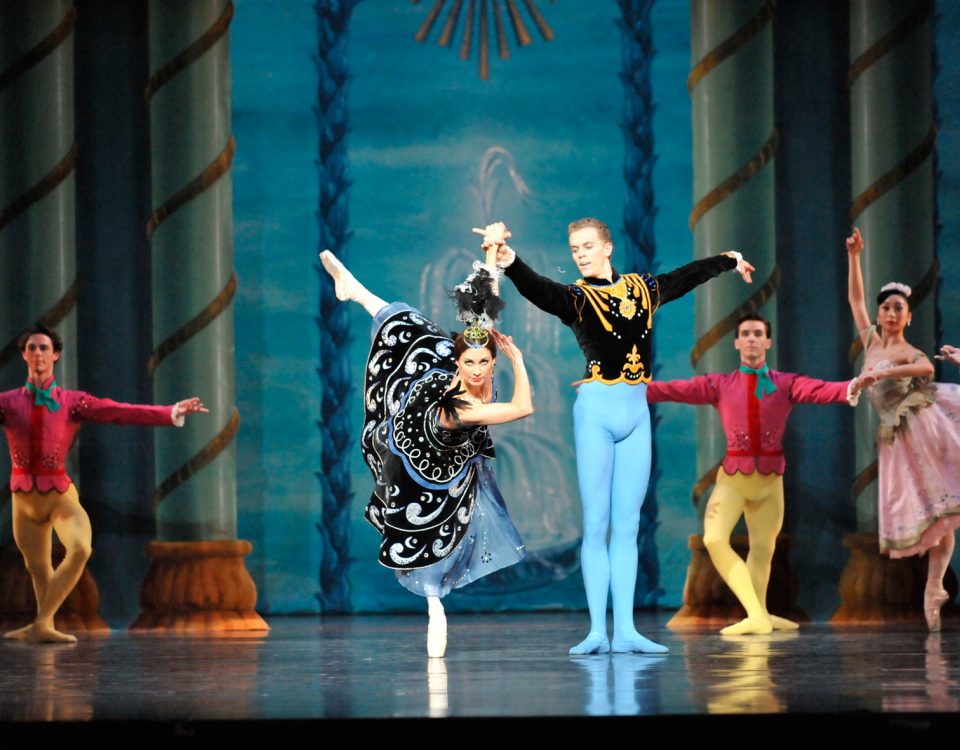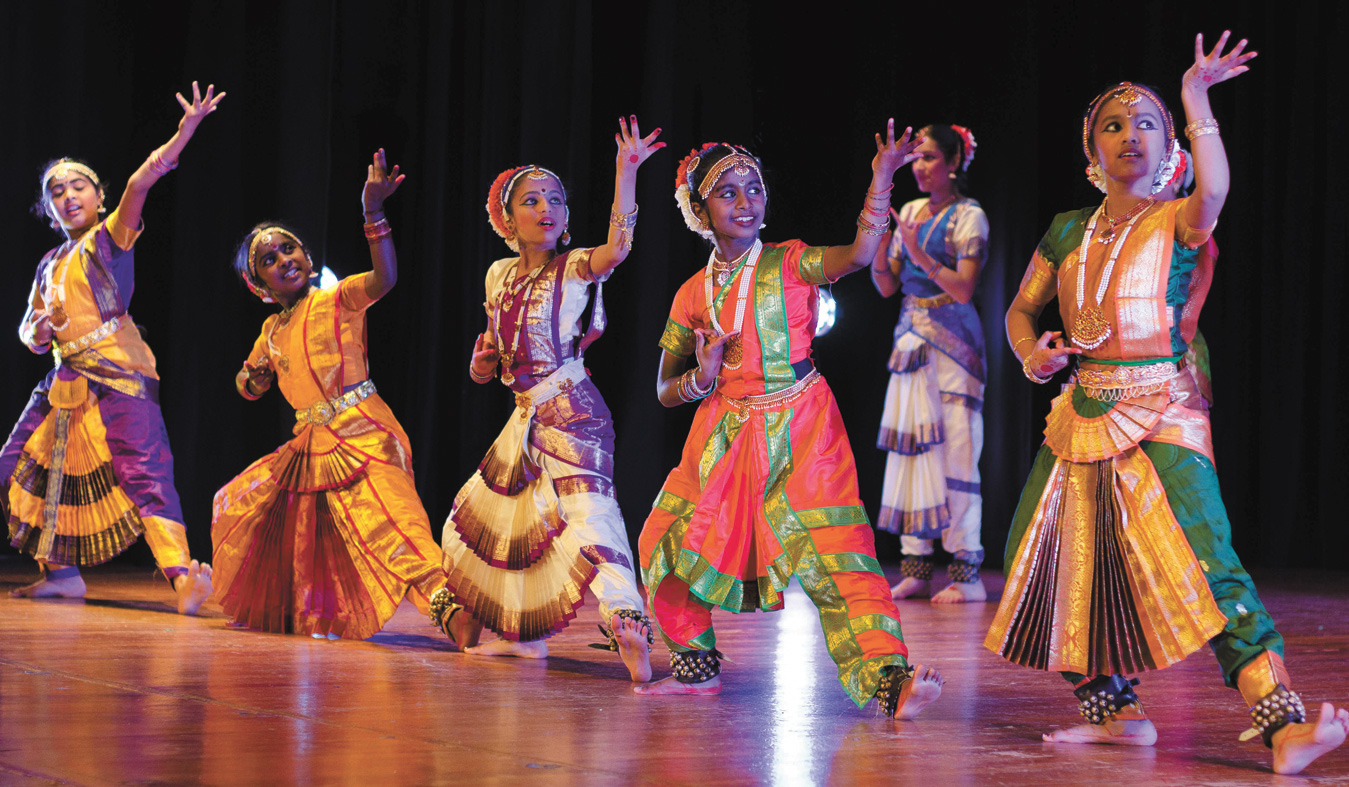
Indian classical dances are performed inside the sanctum of the temple according to the rituals called Agama Nartanam. Natya Shastra classifies this type of dance form as margi, or a soul-liberating dance. Dances performed in royal courts to the accompaniment of classical music are called Carnatakam. A Hindu deity is considered a revered royal guest in his temple, and should be offered all of the "sixteen hospitalities", among which are music and dance. The "sixteen hospitalities" please the senses.
The term "classical" (Sanskrit: "Shastriya") was introduced by Sangeet Natak Akademi to denote the Natya Shastra-based performing art styles. Classical dance performances usually feature a story about good and evil. The dance is traditionally presented in a dramatic manner called nritta, which uses "clean" facial expressions and mudrā, or hand gestures, to narrate the story and to demonstrate concepts such as particular objects, weather, aspects of nature and emotions. Classical Indian dance is also known as Natya. Natya includes singing and abhinaya (mime acting). These features are common to all Indian classical styles of dance. In the margi form, Nritta is composed of karanas, while Desi nritta consists mainly of adavus.

